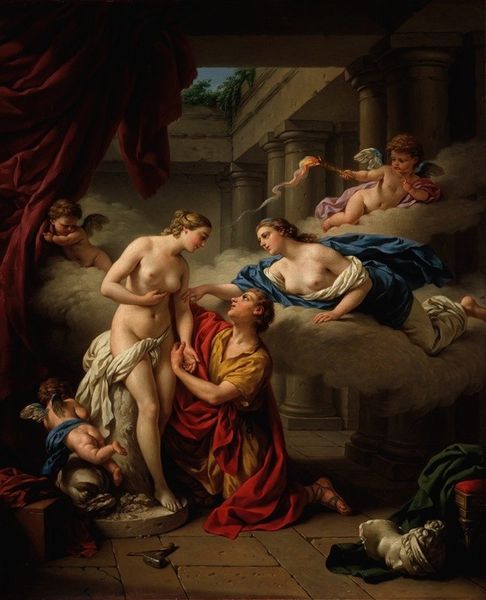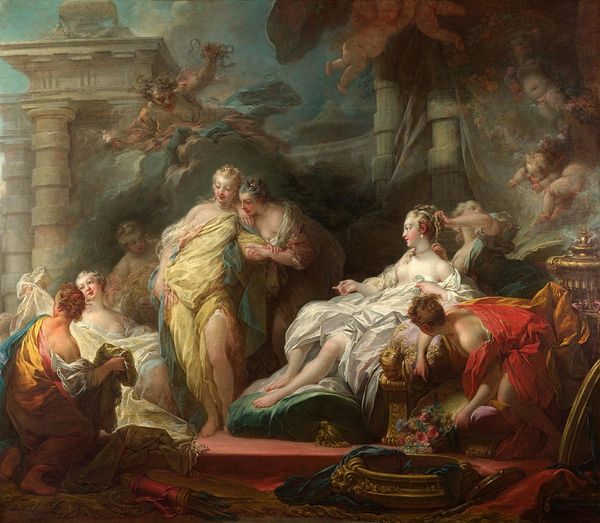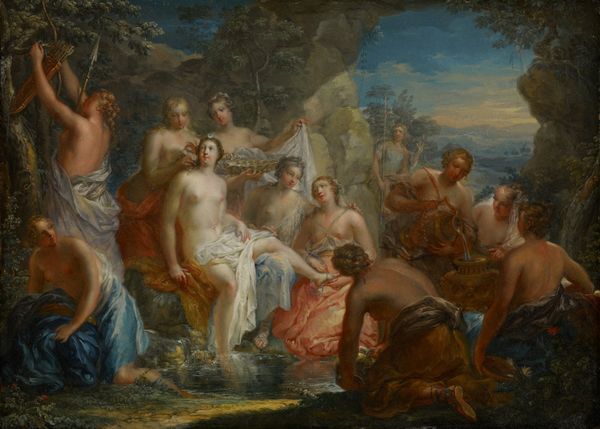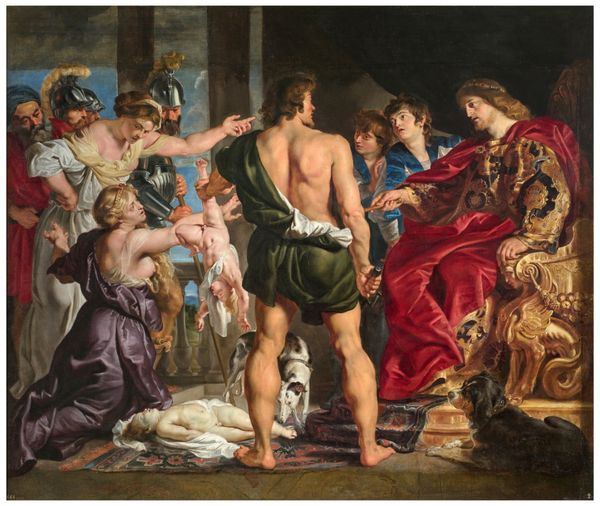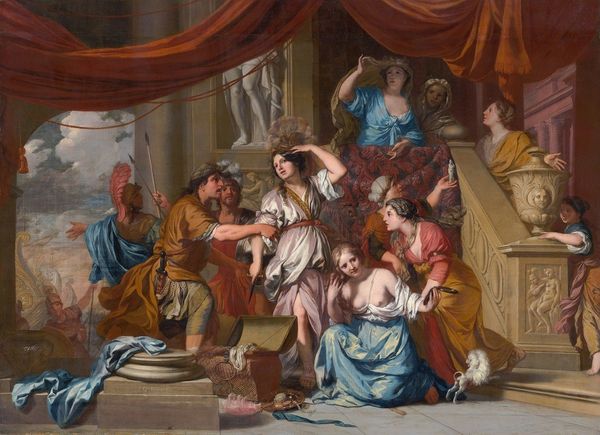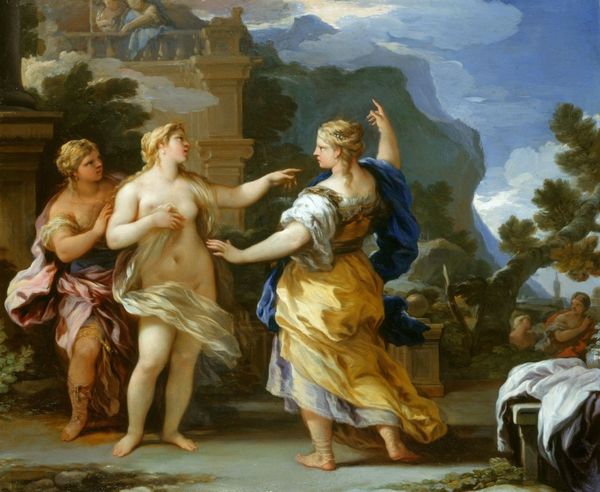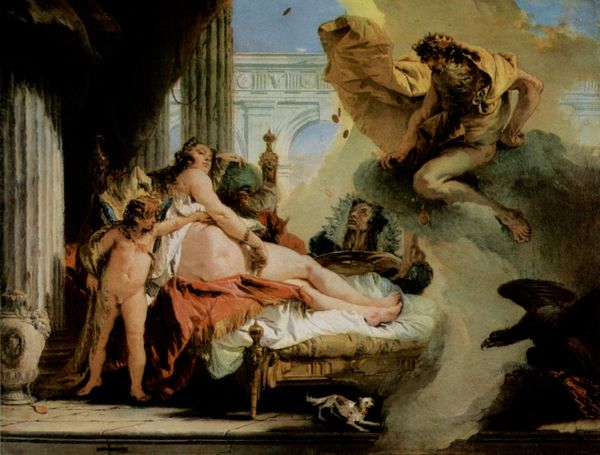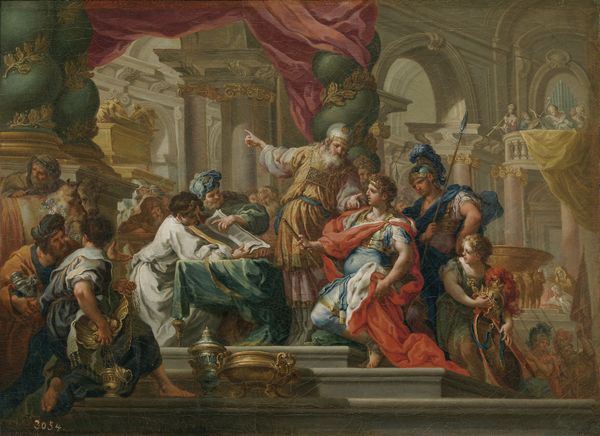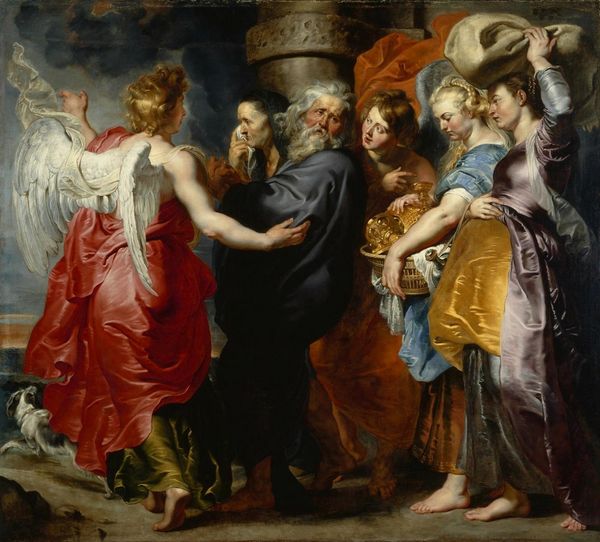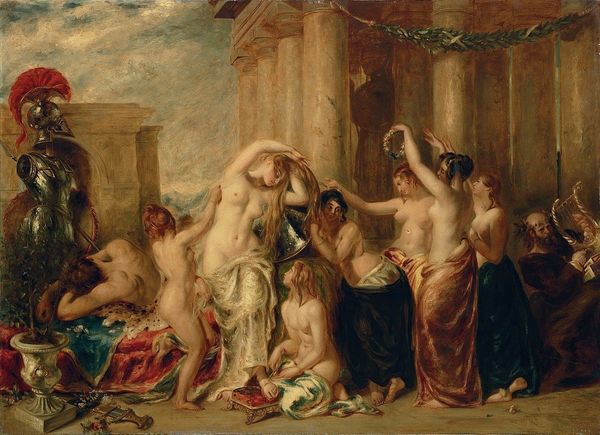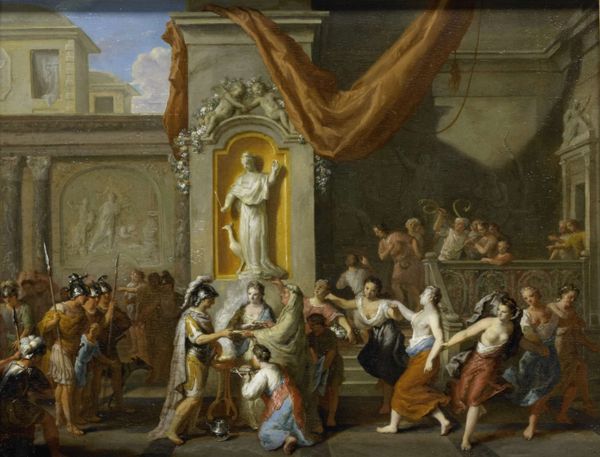
painting, oil-paint
#
gouache
#
water colours
#
allegory
#
baroque
#
painting
#
oil-paint
#
history-painting
#
nude
#
rococo
Dimensions: 15 x 21 1/2 in. (38.1 x 54.61 cm) (panel)19 3/4 x 26 1/2 in. (50.17 x 67.31 cm) (outer frame)
Copyright: Public Domain
Curator: So here we are, gazing at Johann Georg Platzer's "The Pleasures of the Seasons - Summer", from around 1730. What strikes you first? Editor: Well, it’s quite…busy, isn’t it? A kind of organized chaos. The light has a real opulence to it, bouncing off all that skin, the architecture and the drapery, yet something feels…a little stifled. Like too much is happening in too small a space, despite its attempt to embody the ease and exuberance of summer. Curator: Yes, Platzer does pack quite a punch in this relatively small oil painting. Notice the composition - how he uses architectural elements like arches and staircases to create distinct planes and visual pathways through the scene. It is all very cleverly staged, isn’t it? Almost like a theater set. Editor: Definitely theatrical! The figures seem posed, their gestures grand but not particularly believable. I wonder, what’s he really saying about pleasure here? Is it something authentic, or merely a spectacle? All of that ornate detail and artificial rendering pushes it into "performance," almost satirical. Curator: I appreciate you saying that because I see echoes of Baroque splendor blended with hints of the emerging Rococo style. See the playful cherubs, the sensual nudes…It is a celebration of earthly delights, painted with a meticulous attention to detail, that's true, but perhaps filtered through an almost self-aware lens. Platzer was no dummy and a real scholar of art history. He studied in Italy and absorbed a ton from the great masters there. Editor: He’s clearly a master of technique. But the way he presents these figures, especially in contrast to the dramatic setting and heightened colours, it feels almost…hyperreal? Almost bordering on grotesque—making me uncomfortable because the "pleasure" on display isn't translating into any personal joy for me as the observer. Curator: An astute point. But remember, allegory was a very popular theme and one in which our artist seemed to excel, and historical painting was something for which all the artist strove. Considering its function, perhaps its "message" isn't that direct. And consider how innovative oil paint was for rendering light and form so dramatically. Editor: Fair enough. But even understanding the historical context and acknowledging his technical prowess, the overall effect still leaves me somewhat detached. I'd be more interested to meet Platzer at another juncture of life, to see his understanding of a subject besides courtly drama. Still, not every painting has to deliver catharsis. Curator: No indeed, and now that we've spent some time with “Summer," perhaps the painting has worked its own charm. Whether theatrical or truthful, its presence makes me contemplate on how visual language is a tool of time. What stories will a piece like this hold centuries on from today?
Comments
minneapolisinstituteofart almost 2 years ago
⋮
Ceres, the ancient Roman goddess of summer, appears as a sculpture in a shell niche. She holds a cornucopia, denoting the abundance of the earth. Beyond the archway, people are at work in the fields and a man cools off by the river’s edge, while aquatic activities of a more erotic nature proceed in the foreground.
Join the conversation
Join millions of artists and users on Artera today and experience the ultimate creative platform.

